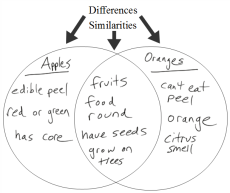parallel talk – a great method for motivating children to talk without the frustration of high demand – the child is given opportunities to engage in activities that he finds interesting, while the caregiver talks about what the child is doing -the caregiver uses language that is at or just above the child’s level – often used in collaboration with self-talk
examples: for a child playing with a plane, say things such as, “You’re flying the plane. The plane is high. The plane is low. You gave the plane to me.”
play therapy – very useful for initiation, social language, turn-taking, sharing – can involve moving child from lower levels of play (such as banging or shaking toys) to higher (such as self directed play, play directed toward others, relational play, and symbolic play) – strategies are taught to caregivers, often involving allowing child to lead play, with adult redirection as necessary
priming – introducing topics beforehand – can involve stories, index cards, explanations, or anything that can quickly familiarize student with upcoming material – can occur immediately preceding the lesson, the prior morning, or the prior evening – especially effective when part of a routine
example: an autistic child’s anxiety increases in response to certain things, such as handwriting, so the morning activities are briefly explained to the child ahead of time each morning, including handwriting






